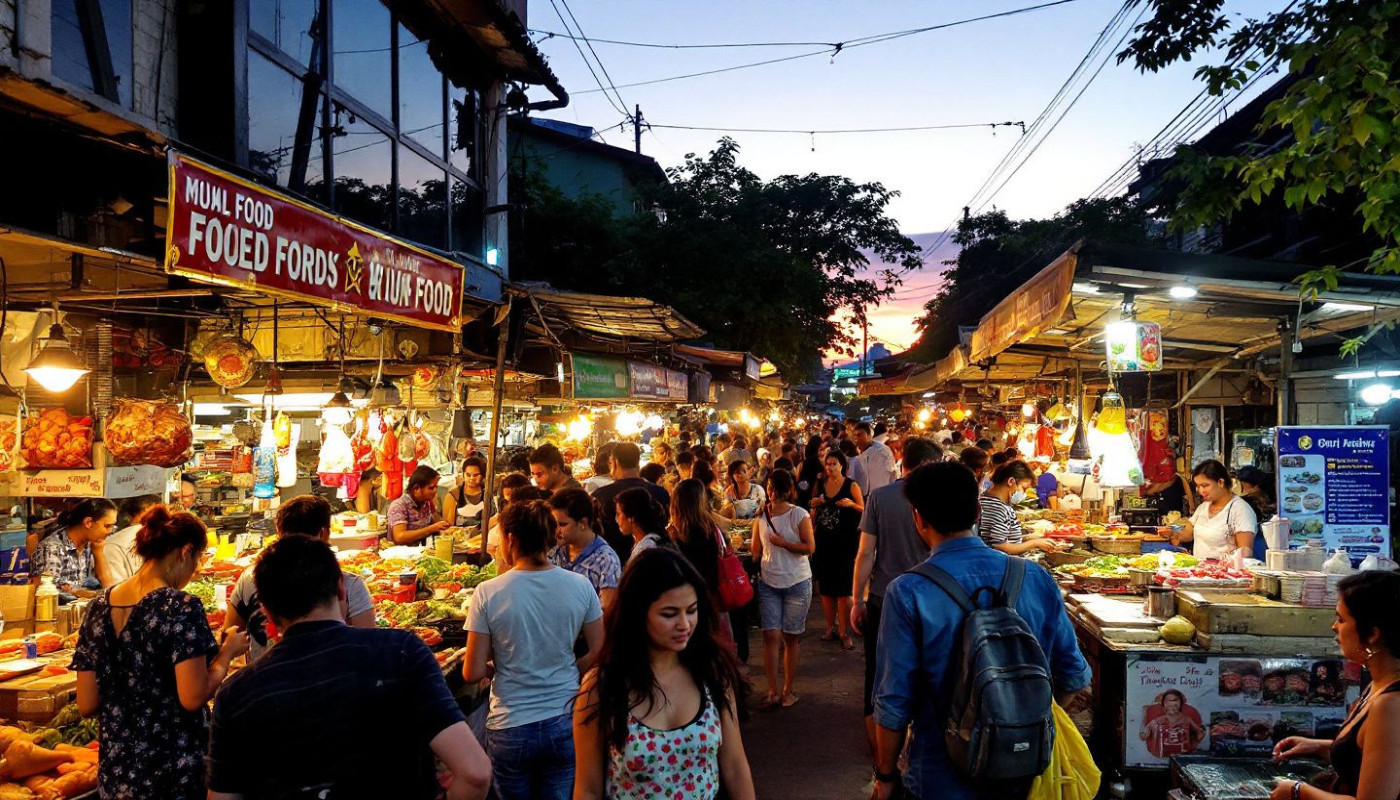Table of contents
Urban culinary districts are experiencing a vibrant resurgence, captivating food enthusiasts and city explorers alike. These lively neighborhoods blend rich history with modern innovation, offering a unique tapestry of flavors and social experiences. Delve into the following sections to uncover how these dynamic areas are shaping culture, fostering community, and influencing the future of urban dining.
The revival of food-centric neighborhoods
Urban dining environments have witnessed a dynamic transformation as culinary districts breathe new life into city landscapes. Once traditional centers of commerce and daily interaction, these neighborhoods are now evolving into vibrant hubs where diverse cuisines intermingle, attracting both locals and visitors. The historical evolution of food neighborhoods showcases how cities adapt to changing demographics and tastes, often spurred by waves of migration and cultural exchange. In the process, placemaking emerges as a technical strategy, shaping the distinct character and vibrancy of these neighborhoods, turning them into destinations for socialization and cultural discovery.
City food revival efforts are not only about satisfying appetites; they serve as catalysts for broader urban renewal. Culinary districts stimulate economic growth, foster community gathering, and help redefine city identity. In places like the Greater Sydney metropolitan area, such districts have become pivotal in attracting investment and tourism, anchoring urban development strategies that prioritize human connection and quality of life. For more insights, visit Greater Sydney metropolitan area. Through these thriving spaces, cities continue to reimagine themselves, reinforcing the role of food neighborhoods as integral to modern urban life.
Architectural influences on food scenes
Urban districts renowned for their vibrant food scenes often owe much of their character to the surrounding built environment. Culinary architecture plays a pivotal role in shaping both the atmosphere and the functionality of these food-centric neighborhoods. Historic preservation breathes new life into old structures, allowing diners to experience meals within buildings that carry a sense of collective memory and local identity. At the same time, adaptive reuse stands out as a transformative strategy, converting warehouses, factories, and other heritage sites into eclectic dining venues without erasing their original character. This approach not only sustains the unique aesthetic of a district but also promotes sustainability by minimizing new construction and resource consumption.
Food district design goes beyond the interior of restaurants; it encompasses the flow of public spaces, outdoor seating, and the integration of communal areas that invite social interaction. The interplay between open-plan layouts, natural light, and carefully preserved architectural details can enhance the dining experience, making meals memorable and fostering a distinct urban atmosphere. In sum, architecture serves as both backdrop and enabler, creating immersive culinary environments where history, culture, and gastronomy intertwine seamlessly, drawing visitors and locals alike to explore and savor the district's offerings.
Economic impacts and local growth
The revitalization of urban culinary districts drives significant economic growth for cities by fostering job creation, strengthening local businesses, and attracting food tourism. Investments in these districts trigger a multiplier effect, where each dollar spent circulates through the local economy, supporting not only restaurants and cafés but also nearby farmers, artisans, and service providers. This chain reaction bolsters local supply networks and creates new employment opportunities across a wide range of skill levels, directly benefiting the community. In sum, culinary districts act as engines for urban revitalization, stimulating foot traffic and consumer spending that often encourage further development, infrastructure improvements, and a renewed sense of neighborhood identity. Food tourism, drawn by diverse and innovative cuisine, further amplifies these gains as visitors inject additional revenue and support into the area, supporting sustained local growth and stability for independent enterprises.
Cultural fusion and culinary innovation
Urban culinary districts are dynamic environments where cultural fusion drives culinary innovation, establishing thriving centers of urban gastronomy. These districts gather chefs, restaurateurs, and food artisans from diverse backgrounds, facilitating the exchange of flavors, culinary philosophies, and techniques. This interaction fosters what experts call gastronomic hybridity, resulting in inventive dishes that blend elements from different food traditions. Fusion cuisine thrives in these settings, offering creative interpretations such as Korean tacos, Japanese-Peruvian Nikkei, or Mediterranean-Asian tapas that quickly become influential food trends. The interplay between tradition and experimentation not only attracts adventurous diners but also challenges established culinary norms, sparking continual evolution within urban culinary landscapes. Urban culinary districts, by supporting both authenticity and innovation, play a pivotal role in shaping the future of gastronomy and broadening the culinary horizons of cities worldwide.
Future trends shaping culinary districts
Urban culinary districts are entering a transformative phase shaped by emerging future food trends that are rapidly redefining the foodscape of city life. Sustainability is becoming a central theme, with many districts adopting eco-friendly practices such as local sourcing, waste reduction, and green architecture. These initiatives not only minimize environmental impact but also align with the growing preference among urban consumers for transparency and ethical production. Culinary technology is another driving force, as smart dining experiences—ranging from automated kitchens to app-based reservations and digital menus—streamline operations and enhance customer engagement.
In addition, the evolution of the urban foodscape is being influenced by shifting consumer preferences towards health-conscious options, plant-based cuisine, and globally inspired menus. Food districts are responding by diversifying their offerings, collaborating with local farms, and hosting culinary pop-ups that introduce new flavors and food experiences. This adaptability fosters a vibrant mix of traditional and innovative eateries, ensuring that urban dining remains dynamic and appealing to a broad demographic.
Technological integration is also redefining the connectivity within and between culinary districts. Data-driven insights are enabling restaurants to anticipate demand, optimize supply chains, and personalize dining experiences, making smart dining a hallmark of the urban food future. In these districts, food delivery platforms and virtual kitchens further blur boundaries, allowing residents and visitors to access a wide variety of cuisines efficiently. The sum of these changes is a more interconnected, responsive, and resilient urban foodscape.
Looking ahead, the synergy of sustainability, culinary technology, and evolving consumer expectations will continue to shape the future of urban culinary districts. Entrepreneurs and city planners are likely to prioritize adaptive reuse of spaces, community-centered culinary events, and integration of urban agriculture, all of which contribute to a more sustainable and interactive dining environment. As these trends gather momentum, urban culinary districts are poised to become exemplars of innovation, setting the pace for the global foodscape in the years to come.
On the same subject

How Ethical Tourism Enhances Your Cultural Safari Experience?

Exploring The Benefits Of Hiring A Private Driver For City Tours

